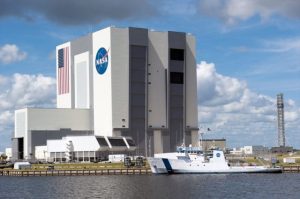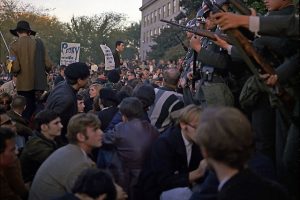10 Secret Cities and Tunnels the Public Can’t Visit
In cities, it may feel like you have access to everything—parks, streets, and public buildings—but the reality is quite the opposite. Even if open areas account for half the surface, much of the true space lies elsewhere: inside towering buildings, many of which contain vast, unused floors, and deep underground, in layers most people never see.
And that’s just what we know about. Beneath our feet lies a hidden world—secret bunkers, forgotten tunnels, and entire facilities that are closed off, classified, or simply lost to time. These subterranean spaces can be vast, mysterious, and sometimes even spectacular. Yet, they remain off-limits, concealed from the public eye by design or secrecy.
Here are 10 of the most incredible underground places you’re not allowed to visit—or in some cases, even supposed to know exist.
10. Mumbai’s Imperial Underworld
When an occupying power takes control of a country, it often leaves behind more than just political scars—it buries secrets, sometimes quite literally. In India, British-era underground structures are frequently discovered with little to no documentation, leaving modern builders and historians guessing at their original purpose.
Take, for example, the vault beneath Kolkata’s National Library. For years, rumors swirled that it was a hidden treasury or even a torture chamber. It turned out to be part of the building’s foundation—but the mystery lingered long after the truth came out.
Mumbai, in particular, is riddled with these forgotten imperial remnants. There’s the 13-room bunker beneath Raj Bhavan, the seat of the city’s governor, and a kilometer-long tunnel beneath the old General Post Office. These aren’t just relics—they’re monuments to a hidden history.
In 2022, yet another mystery emerged: a 200-meter tunnel beneath JJ Hospital, its foundations laid during British rule. It had gone completely unnoticed until a water leak survey revealed it. The tunnel doesn’t appear on any map, and with one end blocked, no one’s entirely sure where it led. Some speculate it connected to a neighboring hospital. Others wonder what else is waiting to be uncovered.
Mumbai’s underground is a maze of imperial shadows—half history, half mystery—and largely off-limits.
9. LA’s Prohibition Party Tunnels: A Secret World of Speakeasies

During America’s first “War on Drugs”—the failed experiment of Prohibition, when alcohol was banned nationwide—Los Angeles found a way to keep the party alive. While the rest of the country struggled with strict enforcement, the city’s mayor ensured that the hooch kept flowing through a hidden network of underground service tunnels. These tunnels weren’t just for smuggling booze; they were also the secret passageways for the city’s flappers and dapper gents, who used them to hop from one speakeasy to the next without a care in the world—or much risk of being caught.
Originally built as service tunnels to support subway construction and ease traffic congestion on the surface, these passages stretched over 17 kilometers (10.5 miles) beneath the city. Over time, they were transformed into a labyrinth of basements and tunnels, each one converted into a hidden speakeasy. These underground bars became the heart of LA’s roaring nightlife during Prohibition, offering a safe haven for those who wanted to drink—and dance—the night away.
One of the most famous establishments was the King Eddy Saloon, which had been around for nearly 20 years before Prohibition began. To survive the crackdown, the bar simply moved underground, turning its above-ground location into a piano store as a cover. Other notable spots included the Edison, hidden in the basement of the city’s first privately owned power plant, and Cole’s, tucked away beneath the Pacific Electric building. Patrons of these establishments didn’t need to worry about police raids or prying paparazzi—as long as they had the right password, they could drink, stumble, and party in complete secrecy.
But as the years went on, the tunnels’ significance faded into obscurity. Today, most of these passages are closed to the public, and many are even unmapped. Some have fallen into disrepair, flooded with water or crumbling from neglect. Yet, the allure of LA’s Prohibition tunnels remains. Just like in the old days, those “in the know” can still find their way inside. Evidence of this hidden world can be seen in the graffiti left behind by modern explorers. According to Atlas Obscura, there’s even an “easy-to-miss elevator” on Temple Street, and rumors of an entrance connected to the subway line that runs from Downtown LA to Hollywood.
These tunnels are more than just remnants of a bygone era—they’re a testament to human ingenuity and the timeless desire to find freedom, even in the face of strict laws. While the speakeasies of LA’s Prohibition era are long gone, the stories and secrets of these underground passages continue to captivate those who hear about them.
8. Havana’s Secret Chambers
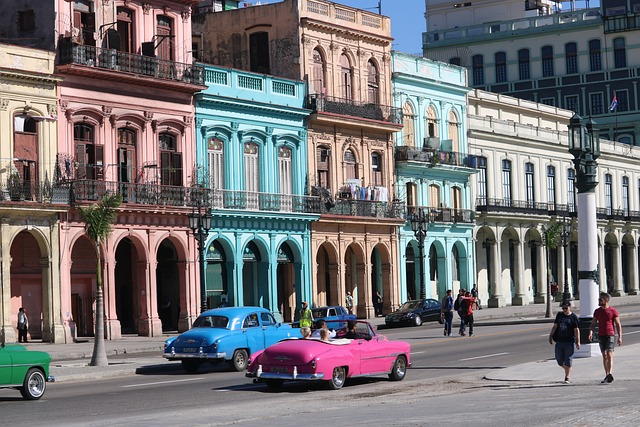
In the early 1990s, whispers began to circulate about what lay beneath the streets of Havana. According to reports, the Cuban government had secretly constructed more than 33 kilometers of tunnels under the city—bomb shelters designed as a last line of defense amid growing fears of a U.S. invasion.
Known as the Popular Tunnels, they were hand-dug by hundreds of laborers, with entrances hidden in plain sight. The entire network was buried beneath the city’s surface like a forgotten organ, quietly pulsing with Cold War paranoia.
But Havana’s underground history goes much deeper. In fact, the island’s fascination with secret subterranean spaces dates back decades. As early as 1929, The New York Times reported the discovery of five secret chambers beneath Havana’s City Hall. No one knew who built them or why. Theories ranged from smuggling operations to hidden bunkers for corrupt politicians.
Today, many of these older spaces remain off-limits and unaccounted for. And while the Popular Tunnels are known in name, their full scope—and purpose—remains shrouded in secrecy. Havana’s underworld is a place of legend, politics, and paranoia, and one the public still isn’t allowed to explore.
7. Tokyo’s Hidden Underground Network: A City Beneath the City
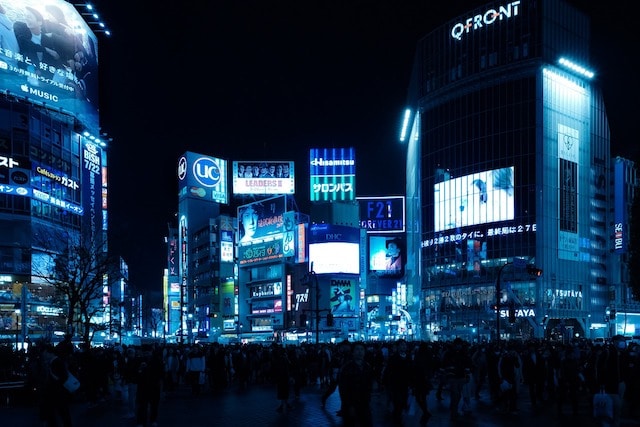
Beneath the bustling streets of Tokyo lies a hidden world of tunnels, canals, and mysteries that rival the city’s iconic neon lights and skyscrapers. While the world knows about Tokyo’s rivers, forgotten canals, and the world’s largest sewer system, there may be much more lurking beneath the surface—things the public isn’t meant to know.
Journalist Shun Akiba stumbled upon this secret when he compared an old map of Tokyo to a newer one. What he found was astonishing. In areas like Nagata-cho, close to the National Diet building (Japan’s seat of government), the old map showed subway tunnels running parallel to one another. But on the new map, they appeared to cross, as if someone had erased the evidence of their original paths. Shun also noticed strange discrepancies near the prime minister’s residence and mysterious tunnels branching off the Ginza Line. These weren’t just oddities—they were clues to something much larger.
Shun’s investigation led him to a shocking conclusion: Tokyo’s underground network might be far more extensive than anyone realizes. Official records claim there are 250 kilometers of tunnels beneath the city, but Shun believes the real number is closer to 2,000 kilometers—eight times the official figure. Many of these tunnels, such as those on the Namboku, Hanzomon, and O-Edo lines, were not originally built for trains. They date back to the World War II and Cold War eras, when Tokyo’s underground infrastructure was repurposed for military and strategic use.
One particularly eerie example is the Chiyoda Line platform at Kokkai-gijidomae Station, near the National Diet. It’s the deepest platform in Tokyo, leading some to speculate that it was built as a bomb shelter. But old blueprints suggest there’s another level even deeper, shrouded in mystery. Then there’s the Yurakucho Line, with its unusually high ceilings and remnants of military facilities along its route. Rumors suggest this line may have once served as a secret military road, used by the armed forces during times of crisis.
Despite his findings, Shun hit a wall when he tried to get official answers. “Lips were zipped tight,” he said, despite his reputable background as a war correspondent for Asahi TV. The silence from officials only fuels the speculation that some of these tunnels may still be in use today.
Tokyo’s hidden underground network is more than just a historical curiosity—it’s a reminder of the city’s resilience and secrecy during times of war and political tension. Whether these tunnels are relics of the past or still serve a purpose in the present, they add an intriguing layer to Tokyo’s already fascinating history.
6. Washington’s Whack-a-Mole Hidey-Holes
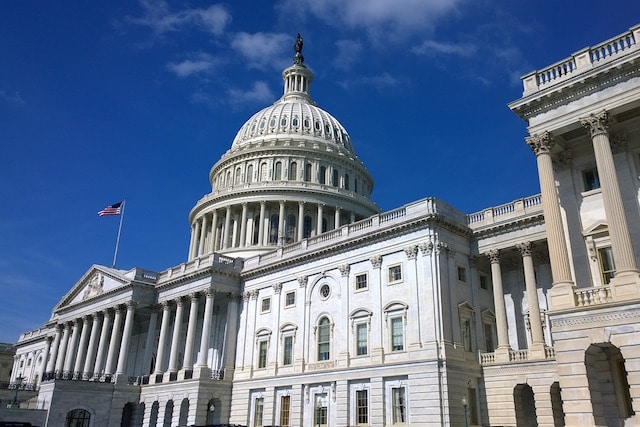
When it comes to secrecy, few cities rival Washington, D.C. While both major parties in America’s political sphere love a good show of transparency, they’ve long shared a deep distrust of the public—and each other. One of the clearest signs? A sprawling network of underground tunnels designed to keep them out of sight.
Some of these tunnels came into the spotlight during the 2021 Capitol siege, when they served as discreet evacuation routes. But they’re used every day, mostly to avoid the risk—or inconvenience—of being seen outside. Think of them as Washington’s version of a high-stakes mole game.
According to The Drive, Capitol Hill alone boasts at least 19 underground passages, winding beneath some of the most powerful buildings in the world. They’re not just for people either—some tunnels can accommodate vehicles. And many have surprising origins. The oldest were built back in the 1800s, originally for ventilation, plumbing, and even book transport via an electric conveyor between the Capitol and the Library of Congress.
By the early 1900s, tunnels got an upgrade. When the Russell Senate Office Building was completed, it came with its own subway car system—eventually reinforced as a Cold War-era fallout shelter. As new federal buildings popped up, more tunnels were quietly added. Today, the Cannon Tunnel, which links the Capitol with the Cannon House Office Building, feels more like an underground village. There’s a shoe repair shop, post office, cafeteria, and even a credit union tucked beneath the political surface.
More recently, a massive underground expansion added three new levels and a 305-meter tunnel leading northwest from the Capitol. Officially, it was built to screen garbage trucks for explosives—but the scale and secrecy suggest otherwise. And that’s not even counting the classified tunnels and bunkers rumored to lie beneath the White House, off-limits and off-the-record.
Washington’s hidden underworld? It’s not just metaphor anymore.
5. Moscow’s Many Secrets: A City of Hidden Tunnels and Mysteries
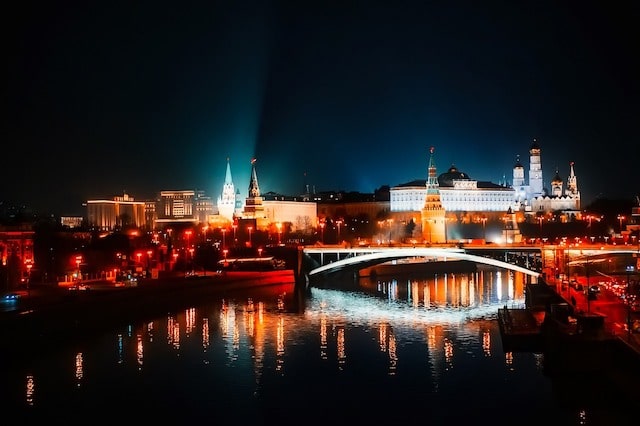
The Kremlin, Europe’s largest ancient fortress, is not just a symbol of Russian power—it’s also a labyrinth of secrets. Beneath its towering walls lies a network of hidden passageways, forgotten tunnels, and eerie dungeons, each with its own chilling story. While some of these mysteries have been uncovered, others remain buried—literally and figuratively.
One of the most famous mysteries is the Neglinnaya River tunnel, a haunted passage carved beneath the Kremlin. Another is the Syani stone mines, where limestone was quarried for the city’s construction. But perhaps the most tantalizing secret is the Library of Ivan the Terrible. This legendary library, said to house a priceless collection of ancient texts, has never been found. Excavations have only revealed endless tunnels, dug deep into the earth, their purpose and destination unknown. Some say the tunnels were sealed off to protect the library—or perhaps something even more sinister. While the search was abandoned—partly due to concerns about damaging the Kremlin’s foundations—the belief persists that the library is still down there, waiting to be discovered.
The Kremlin’s dark past also includes its dungeons, where some of history’s most notorious figures were imprisoned. Beneath two of the Kremlin’s towers, excavations have revealed the cells where prisoners were kept in gruesome conditions. One such prisoner was Prince Andrei Khovansky, who was gagged and chained to the wall, allowed to speak only when addressed by his captors. Nearby, in the Cathedral of the Archangel, more dungeons housed prisoners of the church—people who owed money or broke its rules. These unfortunates were often strapped to “penitence chairs”, painful contraptions designed to inflict suffering. The cathedral also had stone treasuries, built to withstand both fire and theft, ensuring the church’s wealth remained secure.
But Moscow’s secrets don’t stop there. Beneath the city lies Metro-2, a secret subway system built during the Soviet era. Intended to evacuate government officials in times of crisis, Metro-2 is said to run as deep as 250 meters in some places. While much about this parallel subway system remains classified, Moscow’s first post-Soviet mayor confirmed its existence in 2006, adding another layer of intrigue to the city’s underground world.
Moscow’s hidden tunnels and chambers are a testament to its complex history, from the reign of Ivan the Terrible to the Cold War era. Whether it’s the Library of Ivan the Terrible, the dungeons of the Kremlin, or the mysterious Metro-2, these secrets remind us that even the most powerful cities have stories they’d rather keep buried.
4. New York’s Abandoned Subways
Beneath the streets of New York lies a forgotten world—an entire network of abandoned tunnels that once pulsed with purpose. Some served presidents and generals, others carried the city’s lifeblood—mail, water, even the dreams of urban planners long gone.
Take Track 61, hidden beneath the Waldorf Astoria Hotel. This semi-legendary platform is a relic of another era, one that discreetly ferried VIPs like Roosevelt and MacArthur straight from the train into the hotel via armored cars. In 2003, it was even floated as an emergency escape route for George W. Bush. And, in true New York fashion, it’s also played host to fashion shows and Andy Warhol parties.
Then there’s the Farley-Morgan Postal Tunnel, a long-sealed passage under 9th Avenue, once used to shuttle mail. It briefly reopened in 2004—not for its original purpose, but as a secret walkway for guests during the Republican National Convention.
Even older still is the Atlantic Avenue Tunnel under Brooklyn. Built in 1844 and sealed off by 1861, it holds the title of the world’s oldest subway tunnel. It was briefly cracked open in 1918 in a search for German spies—proof that even back then, New Yorkers knew there was more to fear underground than rats.
But perhaps the most surprising subterranean relic is the 66-kilometer Croton Aqueduct, running from the Croton River in Westchester all the way to Bryant Park. Completed in 1842 and unused since the 1950s, it remains perfectly preserved—a ghostly monument to the era when water, not trains, was New York’s greatest underground concern.
This aqueduct fed into the Distributing Reservoir, a vast 16,000-square-meter granite structure once standing where Bryant Park now sits. Styled like an Egyptian temple, it helped solve Manhattan’s deadly sanitation crisis. In many ways, it’s no exaggeration to say it saved the city.
From secret escape tunnels to buried temples of public health, New York’s forgotten underground is as much a part of its history as the skyline above.
3. Rome’s Ancient Quarries: A Hidden World Beneath the City
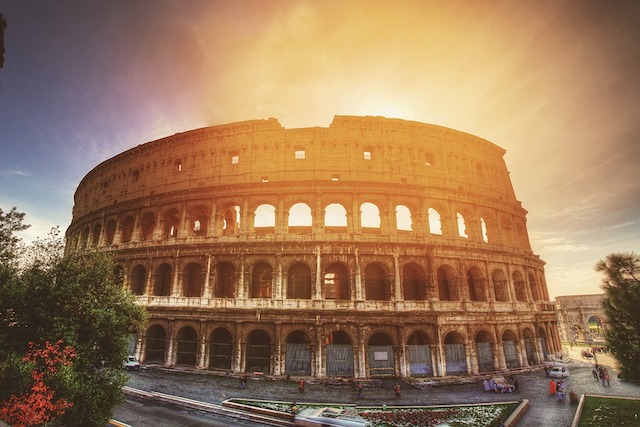
Beneath the Eternal City lies a labyrinth of ancient tunnels and quarries, some of which date back to the very founding of Rome. These subterranean passages, carved out over centuries, have left their mark on the city above—so much so that sinkholes and building collapses are alarmingly common. In fact, it wasn’t until 2013 that geologists finally mapped the extensive network, a response to the increasing number of incidents. Between 2011 and 2013, the number of collapses skyrocketed, from 44 in 2011 to 77 in 2012, and a staggering 83 by December 2013. Faced with these issues, residents have often taken matters into their own hands, patching up the damage with big plastic bags of cement—a far cry from the grandeur of Rome’s above-ground architecture.
The original Ancient Roman tunnelers were surprisingly forward-thinking when it came to preventing such problems. To minimize the risk of collapse, they kept the passageways narrow, ensuring the surface above remained largely supported. However, time has a way of eroding even the best-laid plans. Over the centuries, the exposed rock has weathered, weakening the tunnels. Compounding the issue, later generations widened the original tunnels and continued to dig new ones, further destabilizing the ground above.
Despite their precarious state, Rome’s ancient quarries have been repurposed in remarkable ways over the years. While they’re not open to the public, these tunnels have served as catacombs, sewers, and even mushroom farms. During World War II, they became shelters for Romans fleeing bombings, offering a hidden refuge beneath the chaos above.
Rome’s underground network is a testament to the city’s layered history—both in terms of its geology and its human ingenuity. It’s a reminder that even the most ancient structures can have a second life, though sometimes at a cost.
2. London’s Tunnels of Intrigue
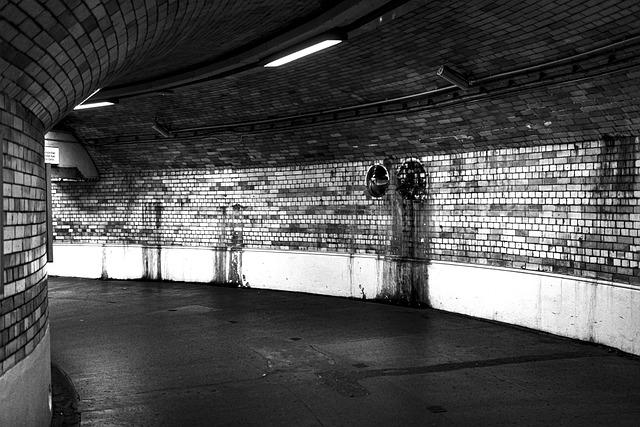
London may be a modern metropolis above ground, but just beneath its surface lies a shadow city of secrets. Beneath the cobblestones and concrete run ancient crypts, plague pits, forgotten rivers—and, more recently confirmed, a vast web of hidden government tunnels connecting some of the city’s most powerful institutions.
While rumors of these tunnels have swirled for decades, it wasn’t until 2017 that the Land Registry officially acknowledged parts of the network. Most were originally constructed by the Post Office, British Telecom, and the Ministry of Defence, and they remain shrouded in secrecy.
One of the most intriguing sections is the Postmaster General’s Tunnel, which stretches from London’s East End to what was once the War Office at 57 Whitehall—now an overpriced luxury hotel. Along its route, elevator shafts rise to government departments and defunct telephone exchanges, some of which double as Cold War–era bunkers.
Buried deep beneath High Holborn Street, one such exchange was built as a nuclear bomb shelter. But it wasn’t all doom and gloom—officials preparing for the worst did so in comfort, with a restaurant, game rooms, and not one but two bars: one for tea, the other for something stronger.
Officially, these tunnels have been out of use since the Cold War. Unofficially, well, no one’s really sure. Urban explorers who’ve ventured into the network describe time-capsule conditions—dusty, quiet, and eerily preserved. But access only goes so far. The deeper tunnels are sealed off, lights remain mysteriously lit, and intruders tend to face unusually harsh punishment. It raises the question: what, exactly, is still down there?
1. Beijing’s Underground City: A Hidden World Beneath the Capital
Beneath the bustling streets of Beijing lies a secret city, known as dixia cheng or the “underground city.” Built during the Cold War, this massive underground network was designed to shelter up to 40% of Beijing’s population in the event of a war with Russia. Spanning an incredible 85 square kilometers, it’s often referred to as the “underground Great Wall of China” due to its sheer scale. But here’s the catch: you’re not officially allowed to see it.
The only way to catch a glimpse of this hidden world is through a guided tour, which takes visitors through a small, looping, and highly commercialized section of the underground city. However, rumors suggest that the vast majority of the tunnels and bunkers remain off-limits. Some claim that up to one million homeless people, known as the Rat Tribe, have made these hidden corridors their home. While this might sound like a fascinating urban legend, the truth is more complicated.
While some parts of dixia cheng have indeed been converted into low-cost, sub-standard apartments, it’s unlikely that the Chinese government would leave such a massive space entirely to the homeless. With 90 entrances scattered across the city, the underground network’s potential for other uses—perhaps less benevolent—is undeniable. The possibilities for “disappearing” citizens or using the space for clandestine purposes are tantalizing to imagine.
What we do know is that dixia cheng was designed for long-term habitation. The tunnels were equipped with grain storage, mushroom farms, and even amenities like restaurants, barber shops, a cinema, and classrooms. These features were intended to make life underground feel as normal as possible, convincing citizens that life was continuing as usual, even in the face of potential catastrophe.
Beijing’s underground city remains one of the most mysterious and intriguing places in the world. While the official tours offer a glimpse into its history, the true extent of dixia cheng—and what lies beyond those locked doors—remains shrouded in secrecy.











